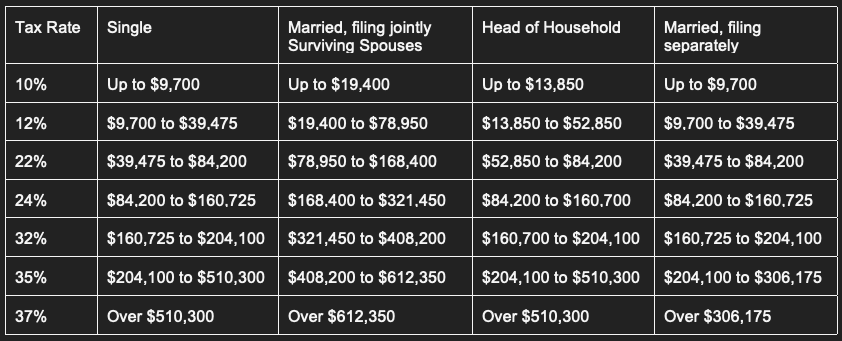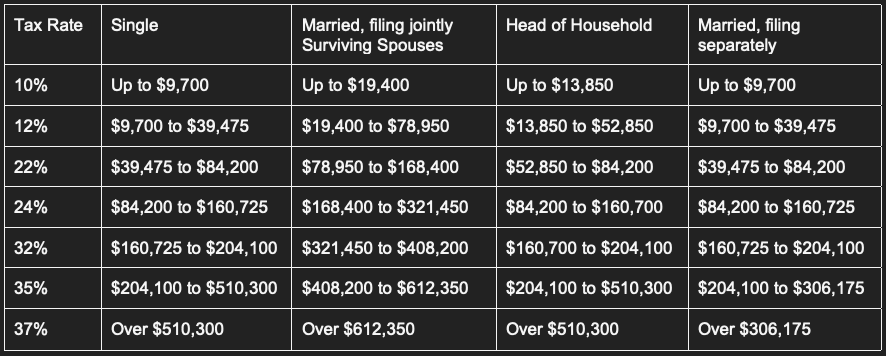For unfiled 2019 tax refund: July 17, 2023 is the deadline.
The clock is ticking for 1.5 million Americans who have yet to file their tax returns from the year of 2019, missing out on potential refunds worth $1.5 billion. Those who still need to file must act fast, as July 17 marks the last chance to claim a tax refund, which could be in the thousands. Don’t leave money on the table.
In June, government officials issued their ultimate notification to approximately 1.5 million individuals throughout America who must submit a return for 2019 prior to July 17, 2023, in order to receive their respective refund.
Taxpayers have a three-year window within which to file and claim their tax returns; failure to do so results in the money being turned over to the U.S. Treasury. In line with this, July 17, 2023, must be marked as the deadline to ensure that all necessary requirements for properly addressing and dispatching a tax refund are met.
Eligibility for the Earned Income Tax Credit
Are you one of the low- and moderate-income earners who could be eligible to receive up to $6,557 from your 2019 income? The Earned Income Tax Credit (EITC) may provide you with an extra refund. So make sure to check your qualifications and see what bonus refund amount you are entitled to.
Those who are potentially eligible for EITC in 2019 had incomes below the following thresholds:
$15,570 if filing individually or $21,370 if filing jointly, for people without qualifying children
$41,094 if filing individually or $46,884 if filing jointly, for those with one qualifying child
$46,703 if filing individually or $52,493 if filing jointly, for people with two qualifying children
$50,162 if filing individually or $55,952 if filing jointly, for those with three or more qualifying children
The clock is ticking for those eligible for a tax refund in 2019, according to Danny Werfel, the IRS Commissioner. Taxpayers who still need to file their return from last year need to do so before July 17 or risk forfeiting any potential tax refunds. In light of the circumstances surrounding the current pandemic, the IRS urges anyone who may have overlooked filing their taxes to act fast and make sure they get what might potentially be a substantial amount back.
Danny Werfel, IRS Commissioner, has urged those who have neglected to file during turbulent times of COVID-19 to take hasty action before their last opportunity to acquire a considerable refund passes by. “People who may have overlooked filing during the pandemic should act quickly,” he said.
According to IRS reports, unclaimed refunds from taxes typically amount to around $893. Those with lower or moderate income could potentially be eligible for up to $6,500 in Earned Income Tax Credit benefits, provided their income is suitable.
Concerning any outstanding balances, the IRS return may be put towards resolving financial obligations, including unpaid child support or student loans. It can also be used to cover taxes owed to the federal government or a state tax agency.
Need help with filing your tax forms for last year as well? PriorTax is here to provide assistance with experienced, free Dedicated Tax Professionals who are available by phone and online to file your prior year taxes.
Need to file a 2019 tax refund?
It is estimated that by averaging all of these unclaimed refunds, the median reimbursement for taxes paid in 2019 would amount to $893.
With the July 17, 2023 deadline for 2019 refunds quickly approaching, it is important that taxpayers take the necessary steps now to ensure they have all the info they need to file before time runs out. The IRS reminds people that there are still ways to collect the data required to put together this tax return despite the fact that a few years have passed since 2019.
In order for you to receive your 2019 tax refund, the initial step is filing taxes for that year. Gather necessary documents from pertinent companies or organizations such as employers, banks, and any entities which gave you money in 2019. Additionally, the IRS website can request a tax transcript which can assist with what is needed for filing 2019 taxes.
For those who are missing vital documents like Forms W-2, 1098, 1099 or 5498 from 2019, 2020 or 2021, obtaining copies of the documents are possible.
Here are some options:
Get your transcript online at IRS.gov provides a convenient solution for those needing forms from their employer or other payers. This free wage and income transcript can be easily ordered with the help of the online tool. Arguably, this is one of the most efficient options available to taxpayers.
People who need to access their wage and income information can submit Form 4506-T to the IRS. This form is known as a “transcript of the tax return” and reveals data from returns sent to the Internal Revenue Service, including Tax Form W-2, Tax Form 1099, Tax Form 1098, Tax Form 5498, and other contribution details.
Although the transcript may contain helpful information for filing a return, it is recommended to find other alternatives first due to the time-consuming nature of written requests. Processing can take several weeks, so planning ahead is essential.
More than $1.5 billion combined is owed in 2019 refunds.
Across the country, many taxpayers are owed overdue refunds from their states. In particular, people in California, Texas, Florida, New York, and Pennsylvania have thousands of unclaimed dollars waiting for them. But unless these individuals submit their tax returns to claim what is due to them, the IRS will keep the funds as part of the U.S. Treasury’s coffers.
Given the extenuating and unexpected circumstances of the COVID-19 pandemic, individuals have an extended period to submit their tax returns for the year 2019 and acquire any refunds they may be owed. The time limit has been moved to July 17, 2023 – a three-year window.
According to an estimate from the Internal Revenue Service (IRS), there is nearly $1.5 billion in unclaimed refunds. An exclusive state-wise appraisal gives a median potential refund for each state and approximates how many persons could be qualified for these payments. Nevertheless, actual amounts of refunds will rely upon a family’s personal tax situation.
With only days left to claim it, up to 1.5 million U.S. taxpayers may be eligible for refunds from 2019 taxes! You could receive hundreds or maybe thousands of dollars from tax returns, but time is quickly running out – you must file your 2019 tax return by July 17 in order to get your money back. Don’t miss out on this incredible chance!
Reach out to your free Dedicated Tax Professional Now at PriorTax.com.
PriorTax.com strives to help taxpayers catch up on their tax filings and get current with the IRS. You can also catch up on your late taxes with PriorTax! Their 9.9/10 top rated tax application guides you with simple questions, and once done, our dedicated tax pros review your tax return and prepare it for filing. PriorTax is currently e-filing 2020, 2021, and 2022 tax returns.











